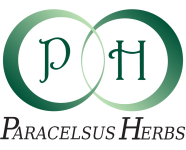Laurence Layne
Experienced, Knowledgable Herbal Healing
Most good stories start with the “once upon a time” theme, or even “a long time ago in a galaxy far away.” That’s true for herbalist’s stories too. Even though we are life-long learners, a lot of our learning came through hard-earned knowledge in the past, because … experience is the best teacher.
Modern herbal healing began in the United States in 1799 with Samuel Thomson, the Old Man of the Mountain. Everything rolled downhill from him. He wasn’t living in a vacuum, though, and incorporated Native American herbs, frontier folk healing, ideas from contemporary medical practice, and whatever worked. After him, his students expanded his system into what came to be called Physiomedicalism, an integration of herbs with the new science of physiology, but emphasizing the role of the innate healing forces of the human body. Another successor school to Thomsonian herbalism was the Eclectic School. The Eclectics, while primarily herbalists, borrowed from from every school of medicine including the “regulars,” the botanics, and even the homeopathic.
A century after Thomson, herbalists had their own medical schools, separate from regular medicine, and homeopathic medical colleges. There were also other alternative schools of medicine such as nature cure (naturopathy), hydropathy, magnetic healing, osteopathy, and chiropractic. Within decades, these herbal medical schools collapsed under the assault of organized medicine, and big pharmaceutical corporations.
While there were still herbal healers around, it took many decades more before the public turned back to herbs and simple natural remedies.
Whatever you call it, the grand sweep of social change and consciousness in the 1960s, sometimes referred to as the counterculture, the hippy movement, the Age of Aquarius, etc., ushered in a revival of the old-time healing methods such as vegetarianism and herbs. Herbs were natural; they were simple; they were inexpensive; they were effective; they belonged to a forbidden or disregarded system of knowledge, and ultimately they were cool.
The herbal revivalists of that generation worked hard to find authentic knowledge of herbs. Almost all of them started with ideas that came from Samuel Thomson. Later in the 1980s came knowledge of Chinese herbal medicine, and an ancient system of healing from India called Ayurveda. Eventually the idea of practicing “herbal medicine” became something people entertained, not just sharing remedies with friends and family. Books that presented and explained how herbs worked, herbal “actions,” and “energetics” began appearing in the late 1980s and early 1990s. This is where I came into the story.
I was dragged to a lecture offered by a famous naturopath by my friend who was a chiropractor. The min-conference was sponsored by some herbal sellers. They introduced me to a product line, and within months I had met my first real herbalist. It was hard to believe that anyone knew that much about herbs! It was the beginning of my herbal path.
A year later, in 1990, I was looking at herbs in a coop, and found a book called Planetary Herbology by Michael Tierra, herbalist, acupuncturist, and naturopathic practitioner of Santa Cruz, California. That book took many people (including myself) interested in herbal healing to a whole new level of understanding. Later, I traveled to Santa Cruz, many, many times to take classes with the Michael and Lesley Tierra, and their many gifted herbal friends such as Christopher Hobbs, Candis Cantin, Nam Singh, Roy Upton, and others.
Michael had first learned about herbs from Dr. John Christopher, herbalist and naturopath from Utah in the 1970s. Dr. Christopher had studied herbs in the dark ages–the late 1940s, when they had fallen in disuse. He ultimately became everyone’s herbal grandaddy. Some practitioners call him a Neo-Thomsonian, because of his use of traditional American herbs.
I trace my lineage to primarily the Tierras, and back to Dr. Christopher. Along the way I’ve learned from and incorporated other schools and teachers. I’ve taken deep dives into Chinese herbal medicine, and visited China twice. In the early 2000s I began to pursue a deeper understanding of Physiomedicalism. At the same time I began to go back and look at traditional naturopathy and hydrotherapy, that is “naturopathic hydrotherapy,” and the naturopathic approach to herbs. After that I was drawn into the revival of Spagyric herbal medicine making, a branch of alchemy descended from Paracelsus.
That brings us to the current story, which is the inspiration supplied to many of us botanical healing people by Paracelsus (1493-1541). While Paracelsus was indeed an esoteric practitioner who knew about both the energy and “energetics” of plants, he was a practical healer, and was interested in what worked. This took him beyond his university doctor education, and he traveled all over Europe seeking cures. A phrase attributed to Paracelsus is: “The patients are your textbook, the sickbed is your study.”
Most of the great herbal practitioners, in my opinion, while wreathed in philosophical reasoning, are very practical in their approach, and seek verification through observation and experience ie. empirical knowledge.
This is the basis of associating our herbal offerings with a doctor the stature of Paracelsus. We use principle-based, philosophical, traditional herbal healing guided by clinical results, experiential knowledge, and holistic outcomes. All the products we sell on this web site have been through the test of time, some of them over two decades being used at our clinic. We continue to experiment, seeking better knowledge, better herbal remedies, and better results.
Laurence Layne, DOMTP, CCH, LMT
Planetary Herbalist, Osteopathic Manual Practitioner, Traditional Naturopath

